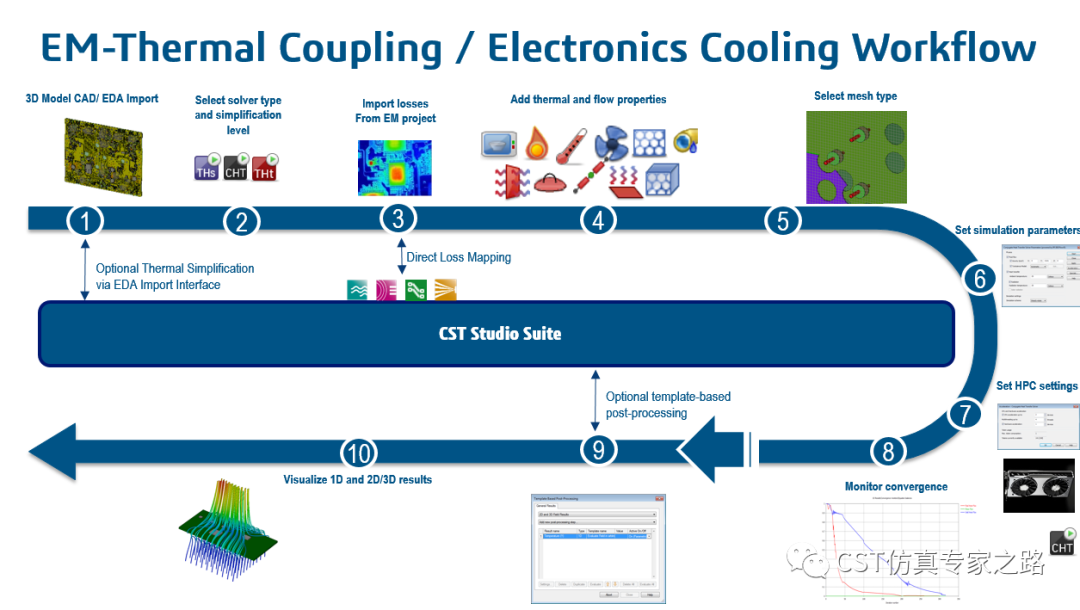【电磁技术在线】【EDA篇】- 6. PCB热仿真
讲师:Michael F. Harrach
00:00 CST多物理介绍
02:40 电磁-热 流程
04:10 PCB导入,自动简化
09:00 IR drop-热 流程
11:00 2R 模型
12:15 主动冷却 (风扇,流体等)
15:50 PCB-thermal demo
CST‘s Mphysics Studio uses the same intuitive GUI as all other CST suite modules, and seamlessly linked to many EM solvers, either uni-directionally or bi-directionally. The thermal conduction based classic thermal solver offers steady state and transient capability, tet and hex meshes, moving media, bio-heat trasnfer (material and blood convection modeling), non-linear, anisotropic material etc. The Conjugate Heat Transfer solver uses immersed boundary, octree based CFD technique to solver all three modes of heat transfer, and loaded with special physical models, such as flow resistance, fan, compact IC package modelings etc for electronics cooling. Structual mechanical solver can import temperature and force distribution from EM and thermal solvers, apply force anddisplacement boundary and compute strructure deformation. Both temperature and deformation info. can be fed back to EM solvers to complete a fully cooupled workflow.

1. A typical EMAG thermal users would start his/her simulation from CAD, this could be built in CST, or imported from various sources, One of most significantimport mechanism is so called ECAD or EDA import, which import and convert a 2D EDA file into a full 3D geometry.
2. The second step is pick the most appropriate solver, for example, if only thermal conduction is of interests (often the case for a chip level, and sometimes board level analysis), then the user would choose what we call classic thermal solvers. If flow also need to be simulated,such as most of the PCB board level and chassis level, then the CHT solverwould be chosen.
3. Most often, the heat dissipation by the electronics, dubbed losses from EM point of view, is needed as input for thermal smulation. This is significant advantageof CST studio suite
4. Next step is to add any additional heat flow sources such as fan, flow resistances, define thermal model, such as 2-resistor models of Chips and soon.
5. The most challenging part of any electronics cooling solution is the meshing. Many times the geometries are not water-tight, and surfaces are self-intersecting, so called "dirty geometris" from CAD. CST studio suite has a uniqe technology called Perfect Boundary Approximation, which gurantees a mesh regardless of the geometry quality. This has powered CST‘ssuccess with the flagship time domain solver for many years and we have been implementing this technolgy to the classic and CHT solver to ensure mesh always can be generated. This PCB, despite its >1000 parts and some faulty parts, is meshed successfully.
6. The a user would set the simulation parameters, which we have been tunning specifically to our users to reduce jargons and set smarter default settings (e.g., open, boundary, auto altitute adjustment and so on), so to minimize the users‘ CFD background requirement.
7. The thermal solvers generally supports parallel computing, and CHT supports GPU.
8. Monitoring the convergence
9. User can also use the verstile template to extract information from the resutls
10. Finally, results can be visualized.





